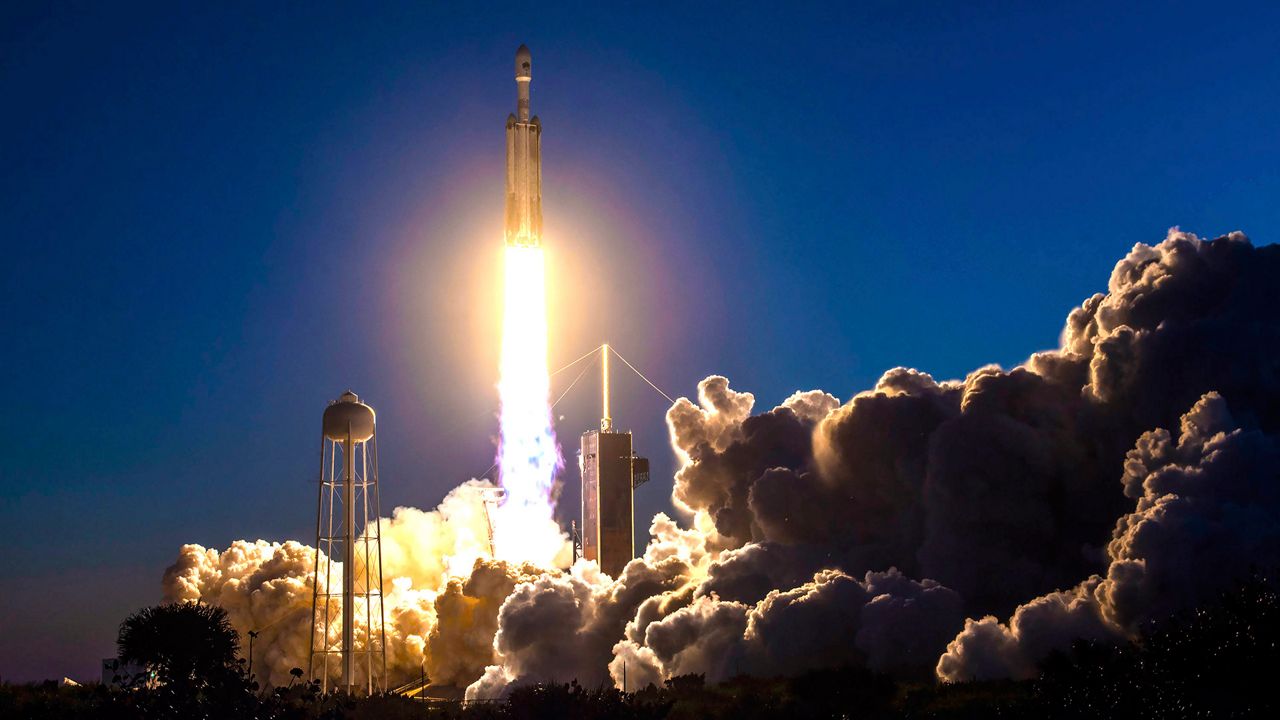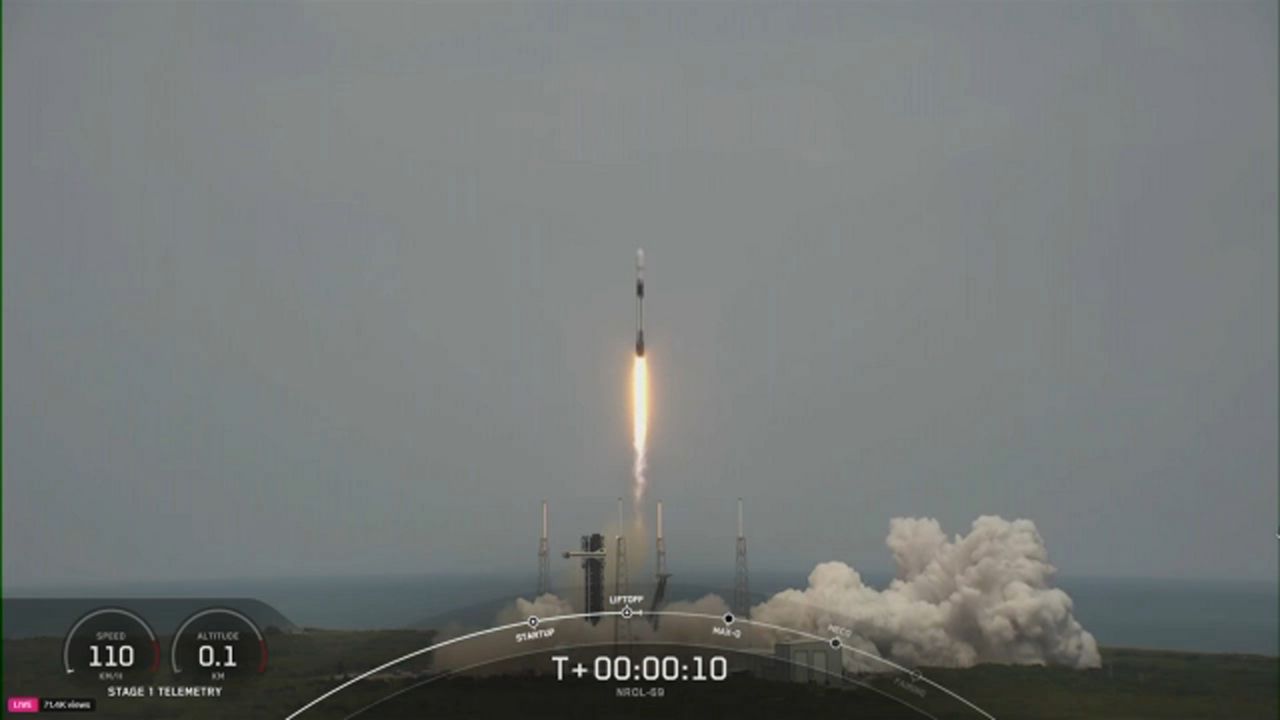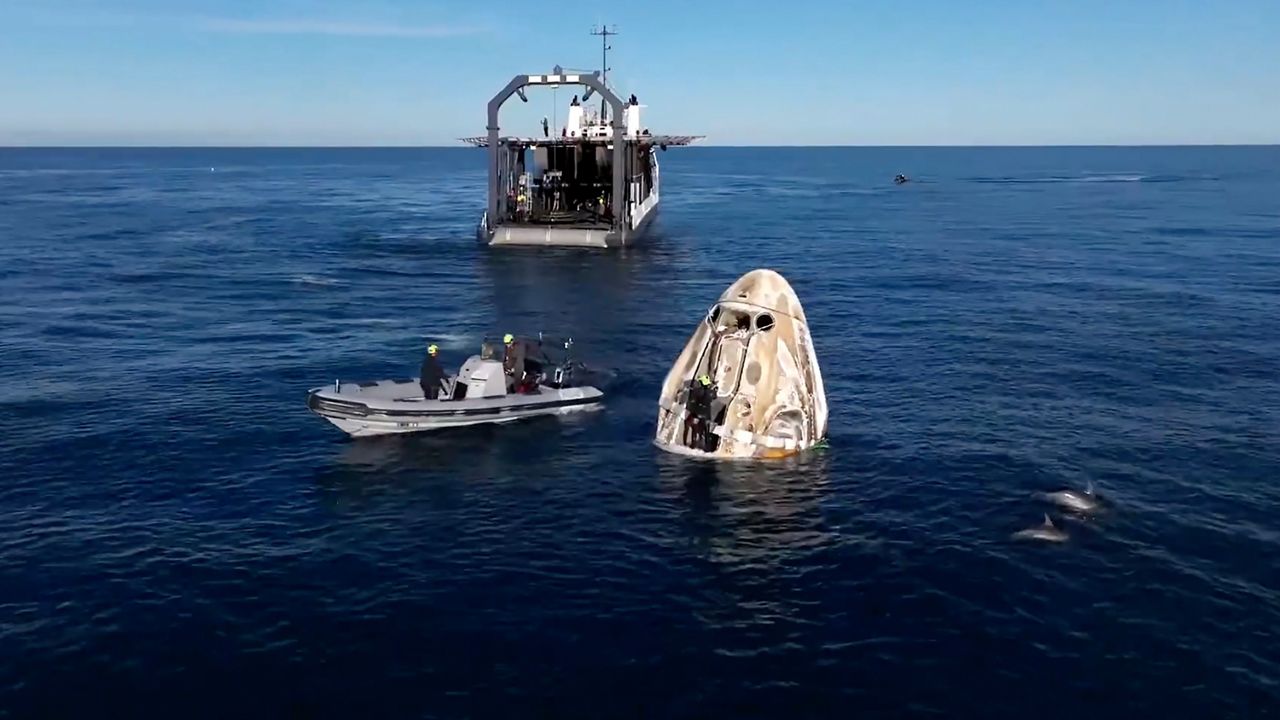KENNEDY SPACE CENTER — Early Sunday evening, SpaceX's powerful Falcon Heavy rocket launched a U.S. Space Force mission.
What You Need To Know
- The liftoff happened at Launch Complex 39A from the Kennedy Space Center at 5:56 p.m. EST
- Two sonic booms may have been heard as the side boosters land
- 🔻Scroll down to watch the launch🔻
Liftoff! pic.twitter.com/oMFOyojOqj
— SpaceX (@SpaceX) January 15, 2023
The Falcon Heavy sent up a military payload from Launch Complex 39A at the Kennedy Space Center at 5:56 p.m. EST.
The launch was originally scheduled for Saturday at 5:55 p.m. EST, but SpaceX announced on Twitter that the mission was pushed back. No reason was given.
The USSF-67 mission was sent into a geostationary Earth orbit.
Falcon Heavy launches USSF-67 to orbit pic.twitter.com/htJfgM0tdE
— SpaceX (@SpaceX) January 16, 2023
After the launch, the Falcon Heavy’s two side boosters landed at landing zone 1 and landing zone 2 at Cape Canaveral Space Force Station — with a good chance of two sonic booms having been heard — but “the core stage will be expended,” stated the Kennedy Space Center.
Drone shot of Falcon Heavy's side boosters landing at LZ-1 and LZ-2 pic.twitter.com/JfYRWDIi1j
— SpaceX (@SpaceX) January 16, 2023
What we know of the mission
Not much is known about the top-secret mission, only that the Kennedy Space Center stated, “The mission will launch the Space Force's second Continuous Broadcast Augmenting SATCOM, or CBAS 2, communications satellite and the Long Duration Propulsive ESPA 3A, or LDPE 3A, rideshare satellite hosting multiple experimental payloads.”
In a press release issued by Space System Command, more information was revealed about the payload, which has two co-manifested satellites that are used for military communications data and transporting cargo to space.
The forward spacecraft, (Space System Command)’s Continuous Broadcast Augmenting SATCOM (CBAS)-2, is a satellite destined for geosynchronous orbit to provide communications relay capabilities in support of our senior leaders and combatant commanders. The mission of CBAS-2 is to augment existing military satellite communication capabilities and continuously broadcast military data through space-based satellite relay links.
The second spacecraft, the Long Duration Propulsive ESPA (LDPE)-3A, is used to rapidly place multiple, diverse payloads into orbit and provide critical data to inform and influence future U.S. Space Force programs. This LDPE-3A mission includes two SSC payloads: catcher and WASSAT, and three payloads developed by the Space Rapid Capabilities Office (SRCO). The SRCO payloads include two operational prototypes for enhanced situational awareness, and an operational prototype crypto/interface encryption payload providing secure space-to-ground communications capability. The LDPE spacecraft will continue to provide access to space for multiple DoD space Science & Technology (S&T) demonstration experiments.
The Space System Command handles the launch operations and developmental testing for the U.S. Space Force, among other things.
In the press release, the Space System Command commended SpaceX for its ability to reuse boosters, adding that the two side boosters for this mission were used for the USSF-44 mission.
Falcon Heavy is now going vertical out at LC-39A at @NASAKennedy. A good sign that we may get our first FH launch of the year tonight!
— Will Robinson-Smith (@w_robinsonsmith) January 14, 2023
This will also be the first National Security Space Launch (NSSL) using a FH with flight-proven side boosters.@USSF_SSC @SpaceX @MyNews13 pic.twitter.com/MnCZPCf30m








